
Pleurophycus gardneri
Broad-rib Kelp, Sea Spatula
12 June 2021
Harling Point, Juan de Fuca Strait
Tide: 1.0 foot tide 11:28 am PDT (measured at Oak Bay Tidal Station)
Conditions: mostly clear sky, no precipitation, wind NE 5 – 10 km/hr, sea calm, 15˚C.
Phase of Moon: Waxing Crescent (approx. 55 hours into this phase at time of interaction); (Previous Phase, New Moon, 10 June 2021 at 3:52am PDT: Next Phase, First Quarter, 17 June 2021 at 8:54pm PDT.)
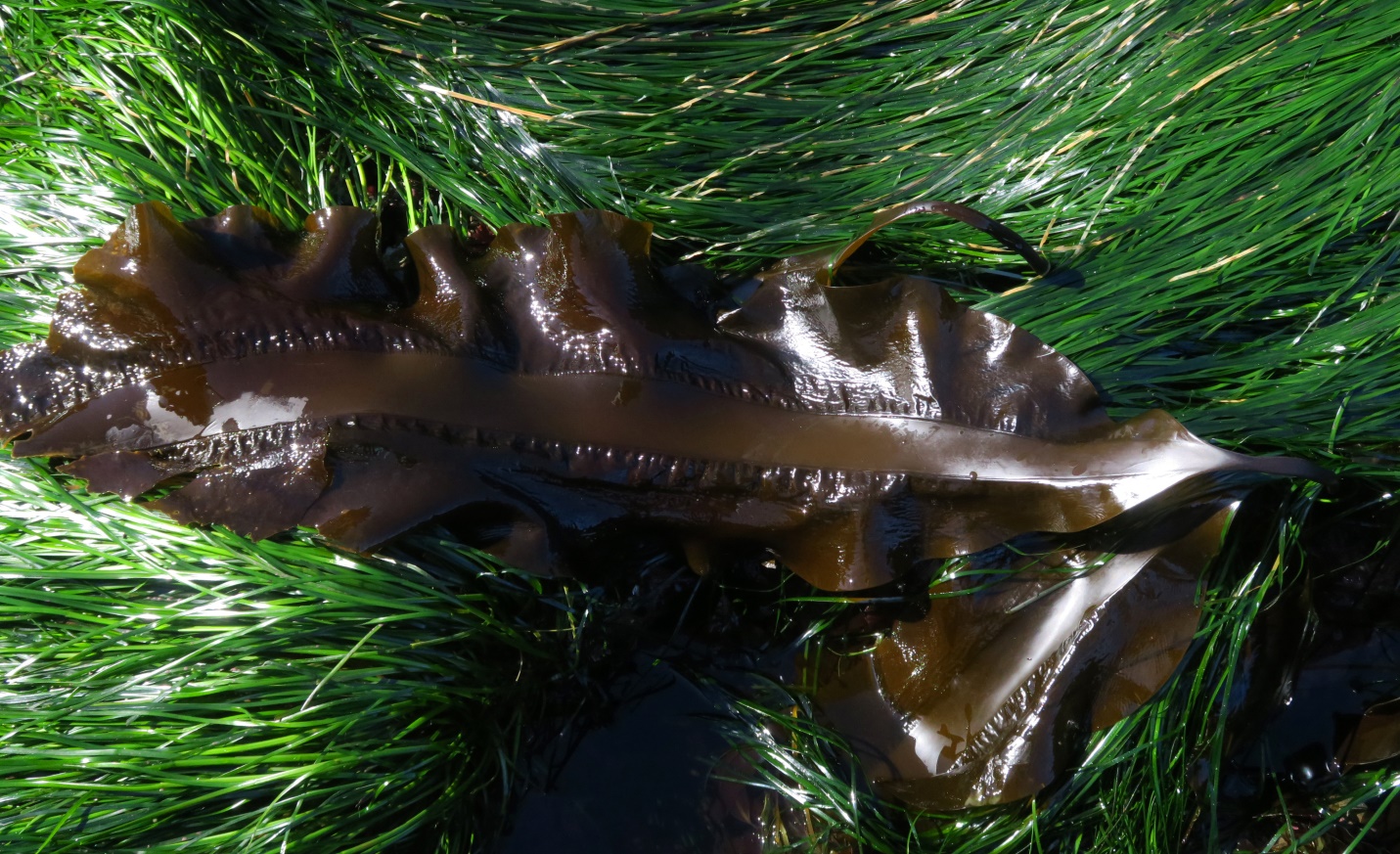
Figure 1: Two Pleurophycus gardneri blades exposed at low tide in late spring. Both blades are already broken at their ends, a process that will continue as the blades always die back in the fall and only the stipe & holdfast are perennial. Botany Bay, Juan de Fuca Strait, B.C., Canada. May 28, 2021. Photo ID 27535 ©Seaweedwhisperings.com
Person 1:
Strong at center.
Frayed or ruffled at edges.
Broad shoulders – outwardly can take criticism but inwardly is hurt. But can do it again – stoic.
Coexists with more dominant seaweeds (here it’s Egregia) but does struggle to thrive in this location this year.
Bryozoans on blades.
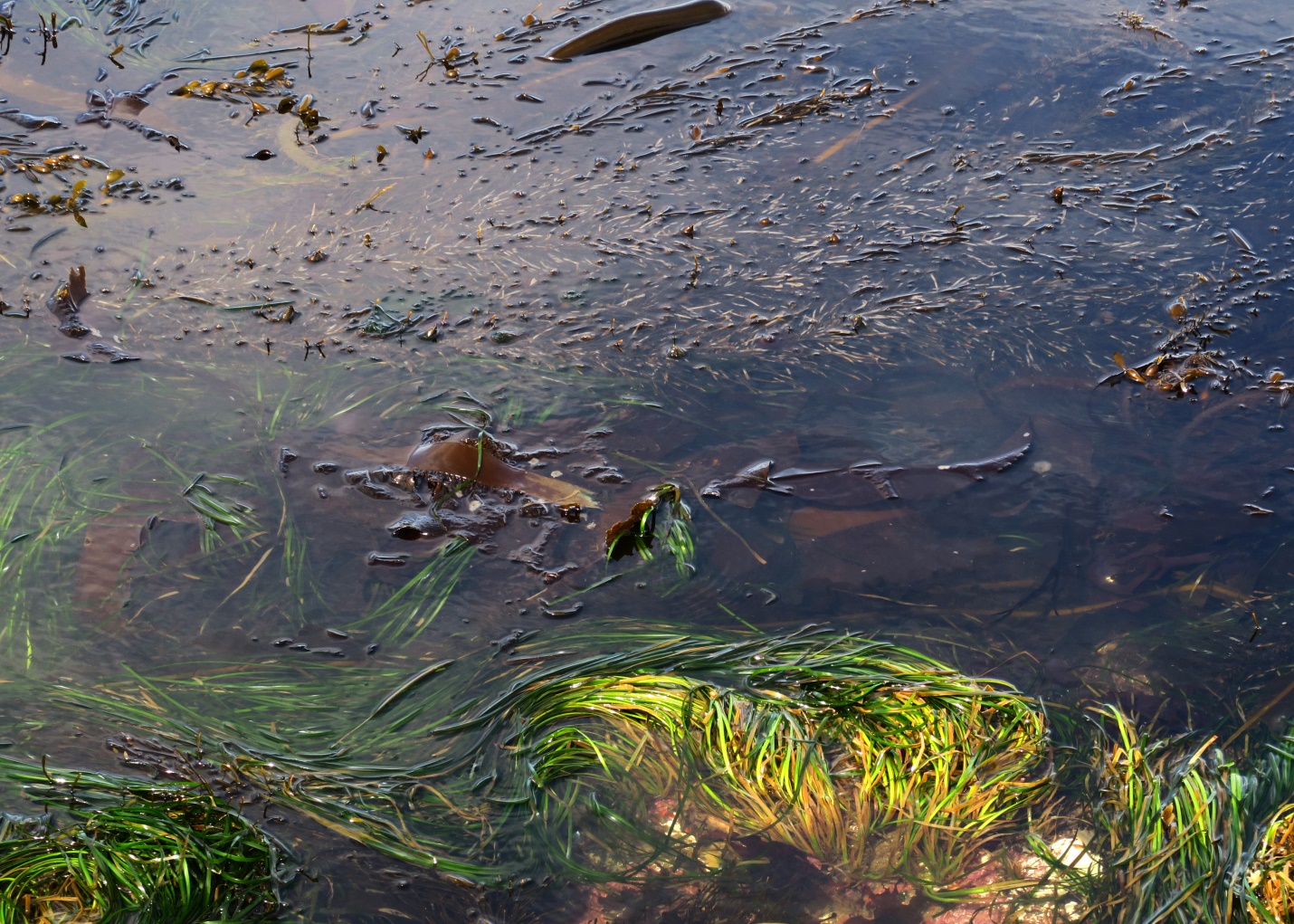
Figure 2: In the foreground and adjacent to the seagrass blades, a single Broad-ribbed Kelp blade is ‘surfacing’ – its wide rib arching up and slightly above waterline. Growing alongside are at least three other species of kelp. Harling Point, Juan de Fuca Strait, B.C., Canada. June 12, 2021. Photo ID 27536 ©Seaweedwhisperings.com
Person 2:
You’ve caught my eye from afar in a few locations.
Your BROAD rib stands out.
Your rib is lighter brown than your blade sides.
It stiffens you along your ‘spine’.
Right adjacent to and to both sides of your ‘spine’ your blade ruffles and then flattens out to an overall very wide kelp blade.
You’re growing among other kelp – Egregia, Alaria, Hedophyllum and Saccharina, and you only show up once in every few ocean swells.
From the rock outcrop above I noticed you distinctly, and as I watched I felt like I have in the past when spotting a large solitary whale out at sea. My mind picked ‘Blue Whale’ to liken you to (the largest whale of all) – I sensed that you are comfortable in “the deep” and when you choose to surface both your size and the rarity of the occasion impresses.
Blue whale – massive, largest animal known; it is impressive in its massiveness, but not splashy or showy; actually its size makes most of its movements appear very gentle.
I enjoyed you better from afar – there your majesty was intact.
Up close I see that on your blades white encrusting bryozoans grow – that is like a whale, too, their skin is home for barnacles and other sea life, and you, Pleurophycus, you host other life too.
Your rib or ‘spine’ is your core – strong, steady, silent and reliable.
Rib is substantial – I touched it briefly before the tide pulled it back to sea; it is flexible but definitely wouldn’t fold over on itself – it only bends so far.
You are broad – in the lower tide you must submit, move in and out with the ocean swell. In deeper tide levels I think your motion is much more limited – only gentle waves or tilts while standing firm – like the polite nod of a head to acknowledge another, not an effusive hug or kisses on the cheek.
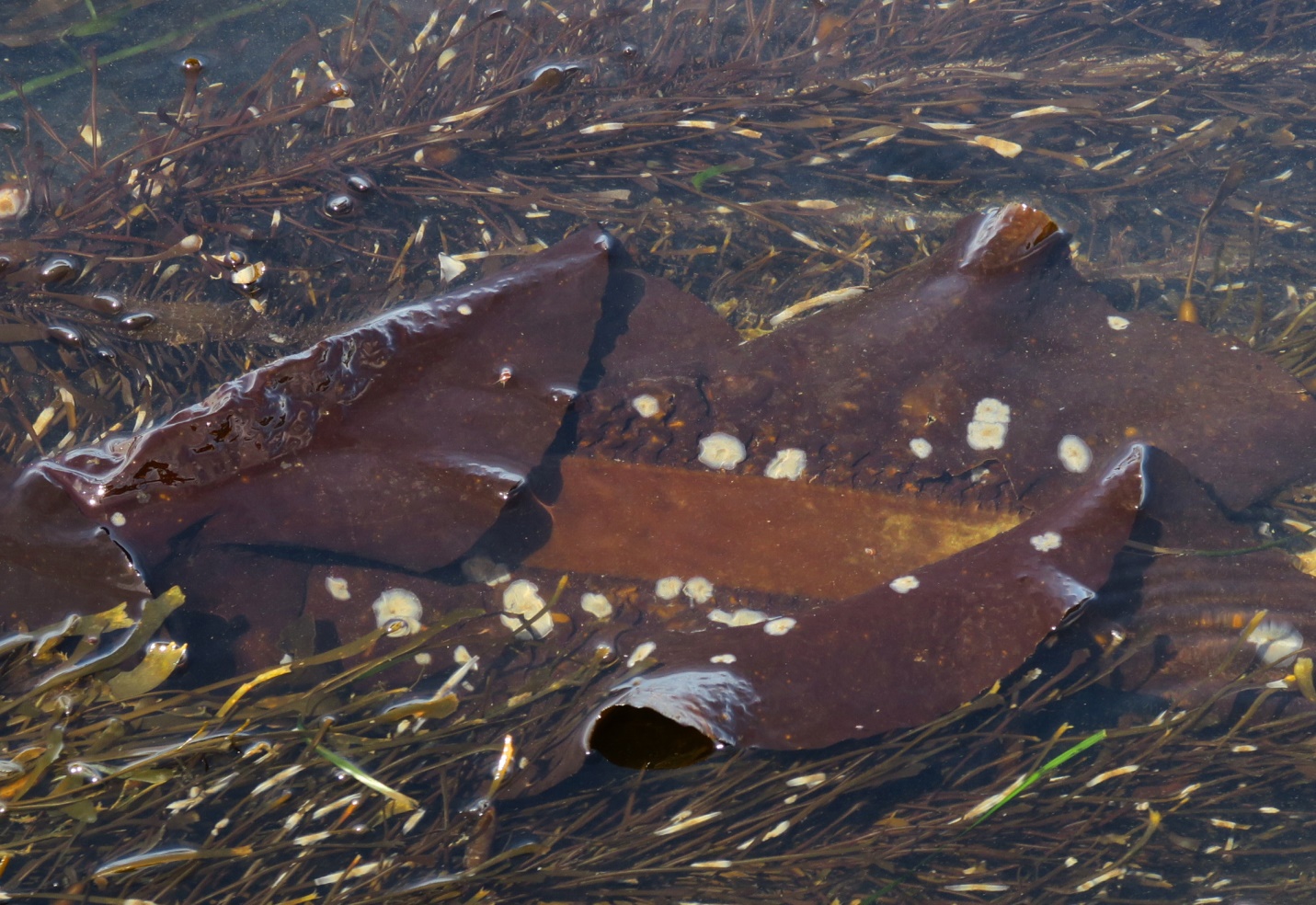
Figure 3: This Broad-rib Kelp is hosting several groupings of the colonial animal Kelp-encrusting bryozoan or Kelp-lace bryozoan, Membranipora serrilamella. The colonies will increase in size all summer but are doomed when the host alga dies back in the fall. Harling Point, Juan de Fuca Strait, B.C., Canada. June 12, 2021. Photo ID 27537 ©Seaweedwhisperings.com
Discussion:
It’s interesting that Person 2 sensed that Broad-rib Kelp is comfortable by “going deep”. When researching the biology of this species we found that this kelp truly has employed the tactic of submergence, or going deeper, as a way to extend its range. Van Blaricom and other researchers (working in southern California in 1986) reported significant populations of Pleurophycus gardneri in areas that were 500 kilometers further south than the previously understood limit of their distribution. By abandoning the low intertidal and shallow subtidal habitat, Broad-rib Kelp moved deeper, to depths of 30 meters or more, and thereby gained a way to thrive where hostile surface conditions have little or no impact. It successfully extended the regions of the Pacific where it could thrive.
It’s interesting that “Blue Whale” came to mind for Person 2 with respect to this seaweed. The few times Person 1 has seen Blue Whales in the wild, he has been struck by their appearance – compared to other whale species he’s seen they appear to be very broad.
So, BROAD rib and BROAD-looking whale... this kelp has the “biggest” rib of our kelps and Blue Whale is not only the biggest whale, it is the biggest animal known to have existed.
Sheer size makes this kelp obvious and easily recognizable. What does such size give to Pleurophycus? Confidence, majesty and gentle coexistence is what we have perceived so far.
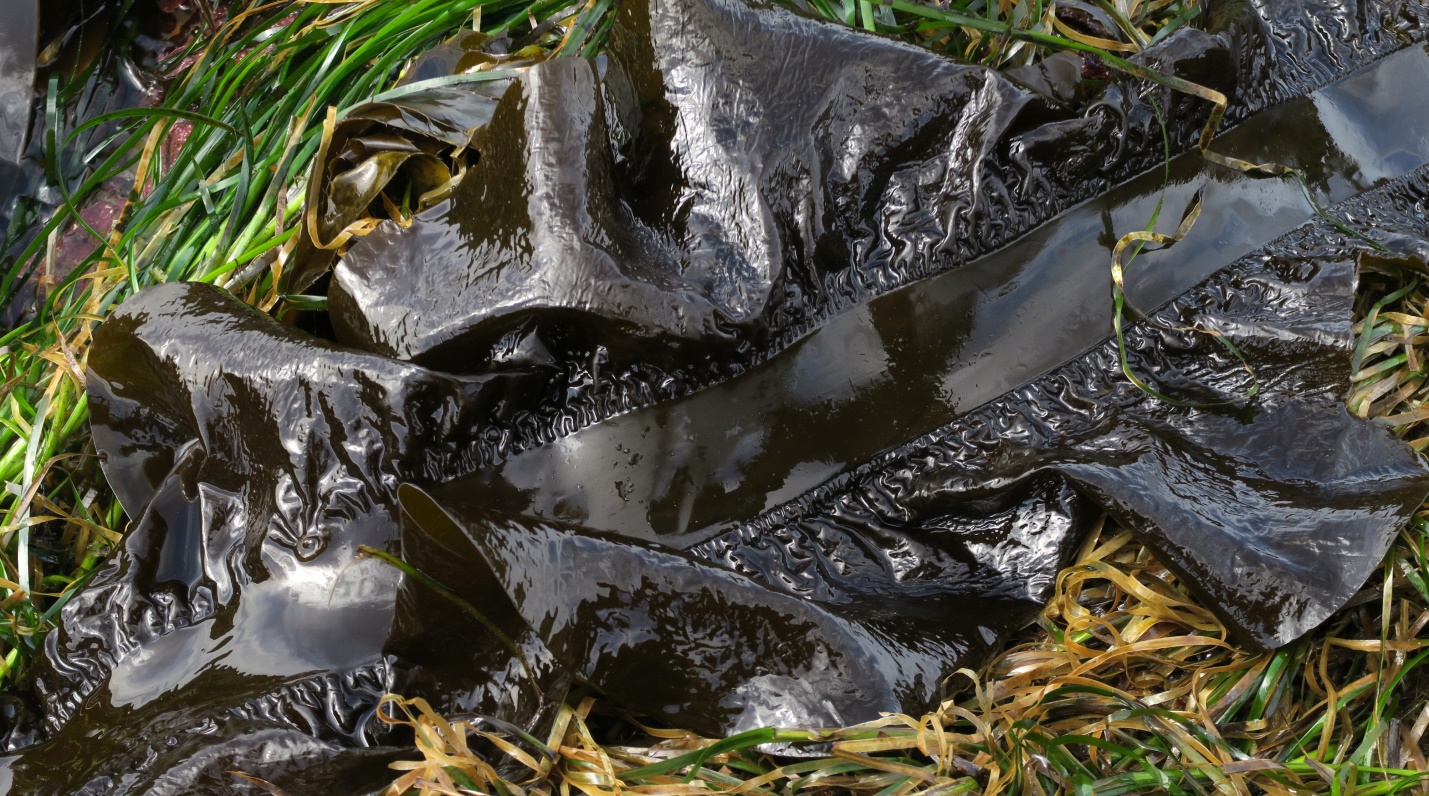
Figure 4: In contrast to Figure 3, this photo shows a vibrantly healthy Broad-rib Kelp blade. This photo was taken almost exactly one year earlier however the temperatures were much milder in that late spring early summer as compared to 2021. The puckers that develop alongside the broad rib are distinctive, and in this individual very well developed. Harling Point, Juan de Fuca Strait, B.C., Canada. June 5, 2020. Photo ID 27538 ©Seaweedwhisperings.com
Biology & Natural History Information:
Description:
Thallus of this distinctive dark brown kelp has a branched holdfast (haptera) and a stipe that grows to 50 cm is cylindrical at the base and flattening above. The stipe connects with an elliptical blade that can grow to 150 cm in length and about 30 cm in width. The solitary blade is thick and has a pronounced single midrib that is up to 5 cm wide; delicate puckers occur in the blade along both sides of the midrib.
Habitat:
This species of perennial deciduous kelp occurs on rock in the extreme low intertidal and upper subtidal of semi-exposed habitats or areas of high current.
Distribution:
Kodiak archipelago, Alaska to Monterey County, California.
Remarks:
The stipe and holdfast of Broad-rib Kelp are perennial but the blade portion dies back in the fall and erodes over the winter; regrowth occurs from the meristem (apex of stipe) the following season.
Researchers studying this species in southern California, 500 kilometers further south that the known range in intertidal waters, found that Broad-rib Kelp exists in significant populations but only to depths greater than 30 meters. There this species exists deep beneath the hostile surface conditions – a phenomenon known as submergence.
The genus name “Pleurophycus” is derived from the Greek meaning ribbed seaweed.
Classification:
Phylum: Ochrophyta
Class: Phaeophyceae
Order: Laminariales
Family: Alariaceae
Genus: Pleurophycus
Species: Pleurophycus gardneri Setchell & Saunders ex Tilden 1900
Type Species: This is the type species (holotype) of the genus Pleurophycus.
Former name(s): There are no other names for this kelp; it is the type species (holotype) for the genus Pleurophycus.
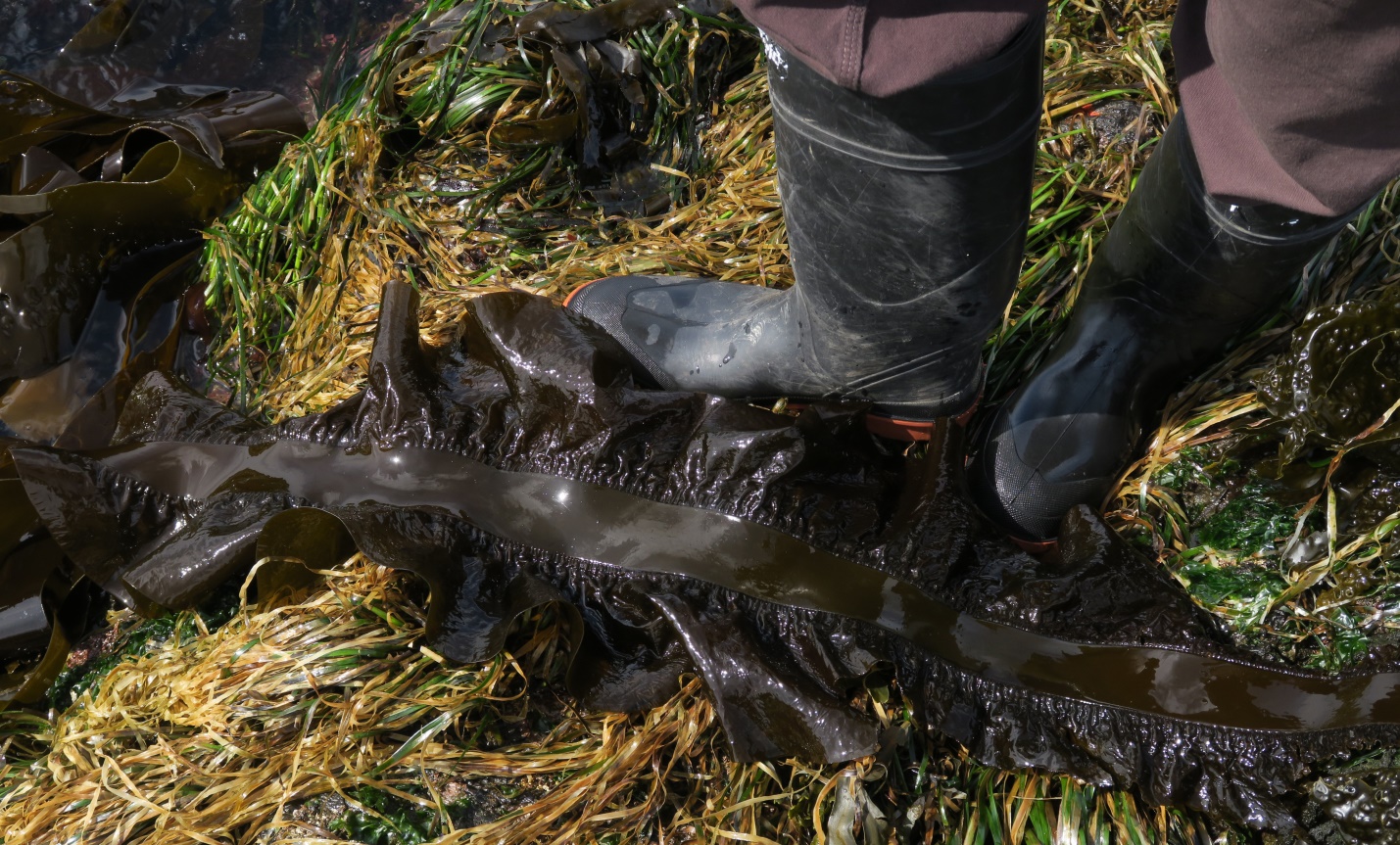
Figure 5: A pair of men’s rubber booted feet give size perspective. Harling Point, Juan de Fuca Strait, B.C., Canada. June 5, 2020. Photo ID 27539 ©Seaweedwhisperings.com
![]()